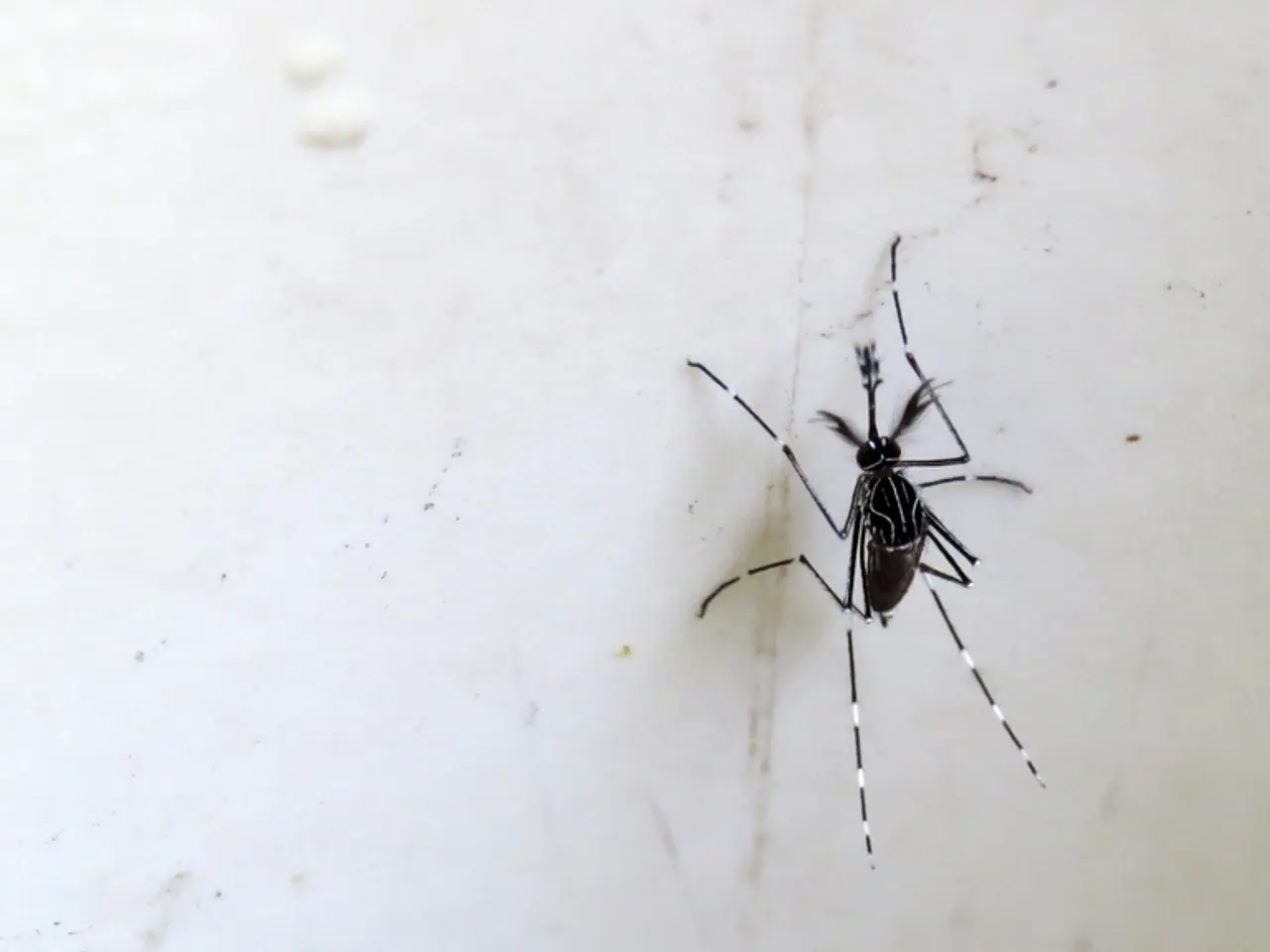Intensified Monitoring in Vietnam Due to Increased Chikungunya Outbreaks Across Asia
In light of the escalating Chikungunya outbreak in neighboring countries, Vietnam is intensifying its efforts to prevent and control the spread of the virus. The current strategy focuses on enhanced surveillance, vector control, community engagement, and healthcare preparedness.
Strengthening Surveillance
The Ministry of Health, in collaboration with regional Institutes of Hygiene and Epidemiology, Pasteur Institutes, central hospitals, and local authorities, is working tirelessly to monitor potential cases and mosquito populations closely. This coordinated approach aims to detect any signs of the virus at borders, health facilities, and communities, particularly among returning travellers from affected regions [1][2][5].
Public Communication and Community Involvement
To reduce mosquito breeding sites, the government is encouraging the public to eliminate standing water, properly cover water containers, dispose of discarded items, and use biological control measures like releasing guppies to destroy mosquito larvae [1][4]. Local authorities have been instructed to intensify public awareness campaigns to educate the community about these measures.
Environmental Sanitation and Mosquito Control
Weekly mosquito control efforts are being implemented at the household and community levels to lower the density of Aedes mosquitoes, the vector responsible for transmitting Chikungunya [1][4]. These efforts aim to control the mosquito population and prevent the virus from spreading.
Technical Guidance for Healthcare Workers
Guidance and training for medical staff are being updated to ensure they are equipped to manage potential cases. This includes patient monitoring, treatment protocols, and referral plans to prevent hospital overload [1][2].
Public Advisories for Returning Travellers
Individuals returning from outbreak regions are advised to monitor their health for at least 12 days and seek immediate medical attention if symptoms such as sudden high fever, joint pain, headache, skin rashes, or prolonged weakness occur [1].
Vector Surveillance and Outbreak Response
Inspection teams are being deployed to high-risk areas and potential hotspots to prevent disease spread. Vietnam is particularly vigilant during the rainy season, which elevates mosquito breeding, and peak international travel periods that increase the risk of virus importation [1].
Although community transmission cases have not yet been detected widely in Vietnam, the Ministry of Health’s proactive multi-agency approach aims to prevent introduction and local outbreaks amid rising cases in countries such as China and Singapore [2][4].
Prevention for Travellers
For those travelling to outbreak areas, it is crucial to take precautions to avoid mosquito bites. This includes using insect repellent, wearing long sleeves and trousers, and sleeping under mosquito nets [3].
International Collaboration
The ministry is working closely with the World Health Organization, the US Centers for Disease Control and Prevention, and domestic experts to assess risks and prepare response measures [6]. Major outbreaks of Chikungunya have occurred on Indian Ocean islands such as La Reunion and Mayotte, as well as in parts of Africa, South Asia, and Europe [7].
Chikungunya is a virus that causes fever and severe joint pain [8]. It is primarily spread by Aedes aegypti and Aedes albopictus mosquitoes [9].
In summary, Vietnam’s control strategy integrates active surveillance, vector control, public education, and healthcare readiness, emphasising environmental management and rapid detection to mitigate the growing risk posed by Chikungunya virus in the region [1][2][4][5].
- To address the Chikungunya outbreak, the Ministry of Health collaborates with regional Institutes of Hygiene and Epidemiology.
- Pasteur Institutes and central hospitals are part of the collaborative effort to prevent the spread of Chikungunya.
- Local authorities play a significant role in this multi-agency approach.
- The collaboration aims to detect signs of the virus at borders, health facilities, and communities.
- Special attention is given to returning travelers from affected regions.
- To reduce mosquito breeding sites, public involvement is encouraged by encouraging elimination of standing water.
- Water containers should be properly covered, discarded items disposed, and biological control measures employed.
- Local authorities are instructed to intensify public awareness campaigns to educate the community.
- Weekly mosquito control efforts are implemented at household and community levels.
- This aims to lower the density of Aedes mosquitoes, the vector responsible for transmitting Chikungunya.
- These efforts aim to control the mosquito population and prevent the virus from spreading.
- Guidance and training for medical staff are being updated to equip them for potential cases.
- This includes patient monitoring, treatment protocols, and referral plans to prevent hospital overload.
- Individuals returning from outbreak regions are advised to monitor their health for at least 12 days.
- They are advised to seek immediate medical attention if symptoms occur.
- Inspection teams are deployed to high-risk areas and potential hotspots to prevent disease spread.
- Vietnam is particularly vigilant during the rainy season, which elevates mosquito breeding.
- International travel periods that increase the risk of virus importation are monitored closely.
- Although community transmission cases have not yet been detected widely in Vietnam, proactive measures are in place.
- The proactive approach aims to prevent introduction and local outbreaks amid rising cases in countries like China and Singapore.
- For travellers to outbreak areas, it is crucial to take precautions to avoid mosquito bites.
- Insect repellent, long sleeves and trousers, and mosquito nets are recommended.
- The ministry collaborates with the World Health Organization and the US Centers for Disease Control and Prevention.
- Domestic experts are also part of the collaboration to assess risks and prepare response measures.
- Major outbreaks of Chikungunya have occurred on Indian Ocean islands and in parts of Africa, South Asia, and Europe.
- Chikungunya causes fever and severe joint pain.
- The virus is primarily spread by Aedes aegypti and Aedes albopictus mosquitoes.
- Vietnam’s control strategy includes active surveillance, vector control, public education, and healthcare readiness.
- Environmental management and rapid detection are emphasized to mitigate the growing risk.
- Technology and artificial intelligence can play a role in enhancing surveillance and response efforts for such outbreaks.
- Beyond Chikungunya, advances in science, technology, and healthcare also impact health and wellness, mental health, nutrition, and lifestyle, among other areas.




